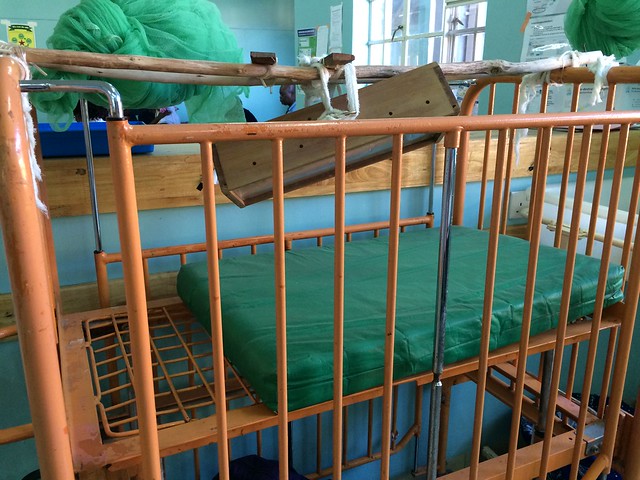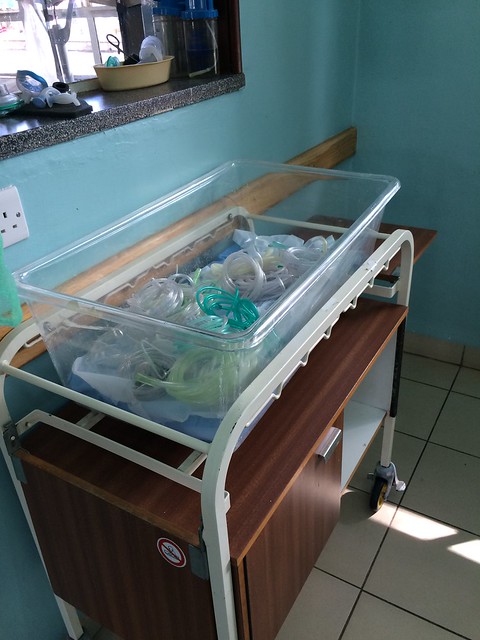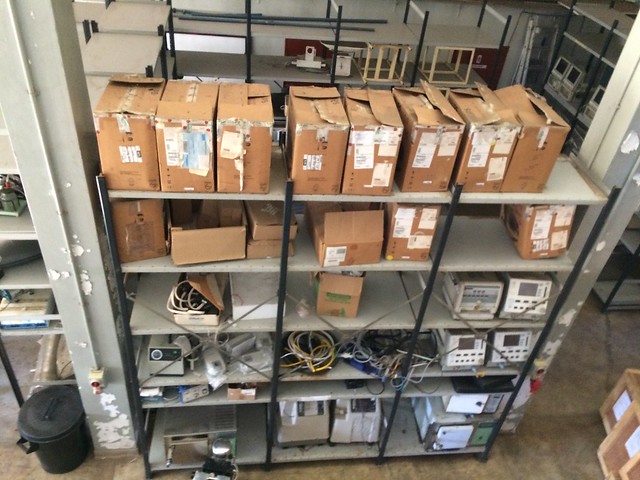I think it’s about time that I mention a book that really shaped my perspectives about development and innovation in Malawi coming into this internship. It’s called The Bright Continent by Dayo Olopade, and it focuses on development efforts in Africa as led by African entrepreneurs, innovators, and visionaries. Central to the book is the idea of kanju, a Yoruba word that meaning “hustle” or “make do”. Olopade uses it to refer to the “specific creativity born from African difficulty” that can be characterized by “recycling, resilience, and… irreverence”. Kanju describes everything from Nigerian email scams to a South African cervical cancer clinic running out of shipping containers. Emily (who is also obsessed with the book) and I often geek out about the concept of kanju (to the point of annoyance for all the other interns, I’m sure) and how we see it playing out in our respective experiences at the Polytechnic Institute and QECH. So I thought I would take this opportunity to talk more about the instances of kanju I’ve noticed and how useful it can be to engineering and innovation.
Kanju Skills
The first evidence of kanju I noticed came from my interactions with our Malawian interns at the Polytechnic Institute. Francis, Charles, Christina, and Andrew are all incredibly talented engineers who have both book smarts and a natural aptitude for building, improving, and redesigning technologies. The day I first met them, we were coming to them to ask for help on the circuitry of the IncuBaby device because we knew that three of them were electrical engineers. The moment they set eyes on the circuitry, they immediately jumped into action and had rewired the device into working condition within 30 minutes, something that Karen and I struggled with for weeks even though w e had the help of some experienced engineers.Even when one of the main electronic parts in the device broke down, the Poly students were able to find a way to continue testing the circuit by using a simple LED as an indicator for whether the device was functioning correctly. It’s these kinds of skills that go beyond theoretical classroom knowledge. Their talent is something born of interacting with machines hands-on–putting them together and breaking them down to understand how they work. It’s also this kind of talent that can lead to out-of-the box innovations that have kanju written all over them.
e had the help of some experienced engineers.Even when one of the main electronic parts in the device broke down, the Poly students were able to find a way to continue testing the circuit by using a simple LED as an indicator for whether the device was functioning correctly. It’s these kinds of skills that go beyond theoretical classroom knowledge. Their talent is something born of interacting with machines hands-on–putting them together and breaking them down to understand how they work. It’s also this kind of talent that can lead to out-of-the box innovations that have kanju written all over them.
Kanju in Practice
 |
Where the Poly Interns demonstrate a more refined engineering-based form of kanju, the quick fixes and adaptations found in the wards around Queens showcase an unpolished version of kanju that is a response to scarcity and necessity. In practice, it seems that the kanju in QECH revolves around gauze. Gauze, perhaps because it is so readily available, is used for everything from holding patient records together to hanging Rice 360 bilirubin lights over a crib with the help of a wooden stick (as shown in the picture above). In the spirit of using what’s available, it’s also interesting to note how different each ward is in terms of how they organize their supplies and dispose of things like syringes and gloves. In the Paeds Nursery, empty beds don’t just take up space. Instead, they are used to store tubing and other necessary materials. Meanwhile, nonsterile trash is placed in plastic buckets (labeled “Dirty Prongs and Other Tubes”) which are easy to access and more convenient to clean.Another good example is a wheelchair that was constructed out of a white plastic chair mounted on wheels. There are countless other instances like these all around QECH. Not all of these practices are ideal, but they are all prime examples of making do with what’s available. They also give important clues about what will and won’t be useful at Queens. Designing technologies that don’t account for the scarcity of resources or don’t fit into the realities of daily practice in the wards will be a waste of time and effort.

Kanju Innovation
The interns this year are hoping to channel the kanju spirit in order to establish new means for innovation and education for engineers at the  Polytechnic. Physical Assets Management (PAM) is a department housed at Queens that maintains the medical equipment at hospitals across Malawi. They are currently a graveyard for broken equipment that can’t be fixed for lack of appropriate parts and adequate budget. The picture to the left shows one of PAM’s many shelves of machines awaiting repair. We hope to create a collaboration between the new Biomedical Engineering program at the Polytechnic Institute and PAM so that engineering students have a chance to do hands-on engineering work with the broken machines at PAM and PAM has a chance to benefit from the innovative ideas of these students. Though the idea is still in development, we hope it can be a mutually beneficial arrangement that utilizes kanju to create a sustainable cycle of problem-finding and solution-engineering between PAM and the Poly.
Polytechnic. Physical Assets Management (PAM) is a department housed at Queens that maintains the medical equipment at hospitals across Malawi. They are currently a graveyard for broken equipment that can’t be fixed for lack of appropriate parts and adequate budget. The picture to the left shows one of PAM’s many shelves of machines awaiting repair. We hope to create a collaboration between the new Biomedical Engineering program at the Polytechnic Institute and PAM so that engineering students have a chance to do hands-on engineering work with the broken machines at PAM and PAM has a chance to benefit from the innovative ideas of these students. Though the idea is still in development, we hope it can be a mutually beneficial arrangement that utilizes kanju to create a sustainable cycle of problem-finding and solution-engineering between PAM and the Poly.
[P.S. As a more fun example of kanju, here’s a picture of our wonderful CPAP Data Officer, Vanessa, opening a Coke bottle for me on a doorframe!]